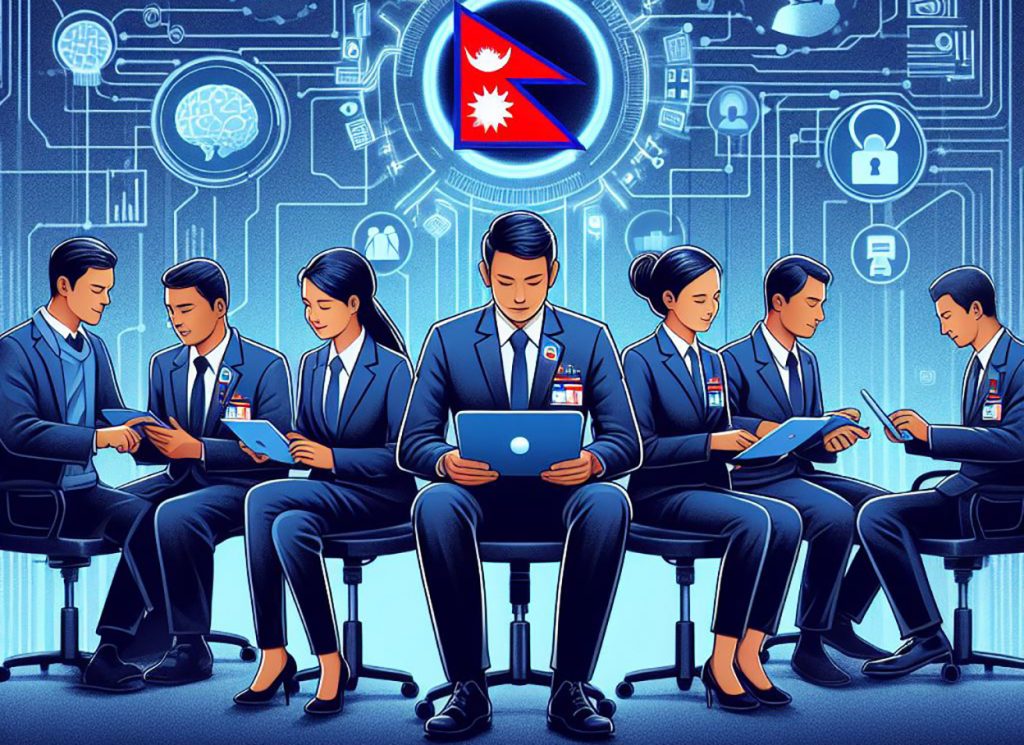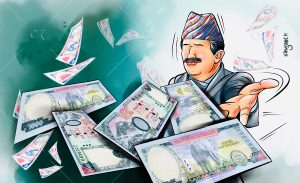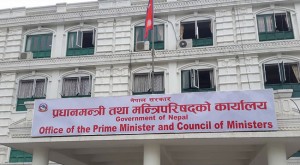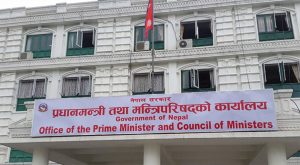
An enactment of yelling from the highlands to deliver public notice for the villagers is still prevailing in some remote parts of the country. Such a practice prevails especially in those places where TV, radio or telecom networks do not work or people are unable to use such networks due to low-income levels or other various reasons.
On the other hand, people residing in urban areas are being updated with every second news of the world with immediate access to the internet. They are making instant comments and putting their opinions on current affairs through social media. Government and political leaders’ activities are being monitored by the public anytime from anywhere.
It means there exists a division of people based on the access or use of networks and devices. Such a gap between people who have access to modern information and communications technology and those who do not is known as the digital divide.
The digital divide is due to unequal access and use of information and resources available in the modern digital world. The three major causes of the digital divide are unequal development and access to network infrastructures, unequal digital literacy and awareness levels, and unequal levels of income.
Some people have enough access to networks however they lack proper knowledge and skills to use modern tools and technologies. Likewise, some people cannot afford such technologies due to their low income levels.
Digital transformation

In the modern days due to the advancement in information and communication technologies, the traditional way of marketing, payment and settlement has been drastically changed. Goods and services are being sold and purchased over the internet, payments are being cashless, and economic activities are being gradually digitalised so that the regular economy is transforming into a digital economy.
The term digital economy refers to the use of information technology to create or adapt, market or consume goods and services. Digital novelties include digital banking, e-commerce, virtual education, smartphone apps and collaboration platforms.
According to US economist and statistician Thomas Mesenbourg in his 2001 paper, three components distinguish the digital economy from the regular economy as follows:
1. Infrastructure: Businesses have software, hardware and other technological resources, plus specialist human talent.
2. E-business: Computer applications, online tools and digital platforms help carry out business processes.
3. E-commerce: A familiar concept, e-commerce means the sale of goods and services online.
Nepal’s Status

According to the latest report of the Nepal Telecommunications Authority (NTA), the population penetration of fixed broadband and mobile broadband based on subscription is 42.37 per cent and 95.30, respectively. This shows broadband subscriptions highly increasing in the later years.
As a positive impact of Covid-19, the access and usage of digital banking services tremendously escalated. As per the mid-December 2023 report of Nepal Rastra Bank (NRB), the mobile banking customers are 22.624 million the internet banking customers are 17.886 million and the wallet users are 20.827 million. Comparing the data with the previous years, the percentage increase is 14.45 per cent, one per cent and 34.35 per cent, respectively. The number of transactions has also been significantly increased than in the past years.
The general literacy rate of Nepal stands at 76.3 per cent. As per the survey carried out by NRB, the financial literacy rate is 57.9 per cent and research showed that the digital literacy rate is staggering around 31 per cent. Moreover, the Nepal Police Cyber Bureau says the country has seen a steep rise in cybercrime cases over recent years.
According to the Economic Survey 2022/23, 15.1 per cent of Nepal’s population is under the poverty line — which means these populations live below USD 1.90 purchasing power parity/day. For this population access to the internet, smartphones, computers and other digital tools and technologies is just a daydream.
Scoring 0.5117 out of 1, Nepal currently ranks at 125 out of 193 member states listed in the e-Government Development Index (EGDI) of the United Nations (UN), which evaluates the national websites, and the effectiveness of the e-Government policies and strategies in the delivery of essential services of the member states. Likewise E-Participation Index is 0.2386 ranking the country in 143rd position. All these facts and figures show the hopeful but poor performance of the country towards digital transformation.
Challenges

Despite the lack of sufficient supporting policies and regulatory provisions, the digital transformation of the Nepali economy seems to be forcefully moving forward with enthusiasm.
Digital initiatives from the private sector are now gradually expanded towards government entities. The increased number of e-commerce platforms, digital payment modes and people’s eagerness to use such applications shows a very positive signal of the digital transformation of the Nepali economy.
However, the ambiguous policy and weak regulatory provisions, the digital divide, the poor network infrastructures, the low level of digital literacy, the high cost of the internet, data privacy and security concerns etc are challenging. Among these digital divide is the major challenging factor for exploring the digital economy in Nepal.
Due to the digital divide, government offices could not completely implement the delivery of their services via digital platforms which is an essential condition for promoting the digital economy.
Next, people are reluctant to adopt new technology due to inadequate education and literacy programmes. People still prefer cash payments while following traditional customs and rituals, for example, huge demand for new banknotes during the Dashain festival for dakshina can be perceived.
Ironically it is observed that people are making online revenue payments but the vouchers have to be verified by visiting the bank and get stamped there. Likewise, the document such as the bill book of a vehicle can be renewed via digital wallet but the hardcopy should be stamped by visiting the corresponding office. Also, there are offices which cannot provide free WiFi networks however they are proclaiming service receivers to submit every document via the online platform.
Way forward
The government should formulate clear-cut policies regarding the digital divide. Programmes like ‘Internet for all’ should be implemented through massive investment in the development and expansion of network infrastructures.
Domestic trade should be linked with international trade thus promoting international e-commerce that includes the export of domestic goods and services through the streamlined arrangement of international payment gateway.
The quality of internet service should be ensured along with sufficient legal provisions. Proper monitoring of internet service providers (ISPs) and compensation for customers for not meeting standards by the ISPs should be guaranteed.
Digital literacy programmes should be launched massively in digitally backward regions and communities. Educational institutions, social organisations and mass media could play crucial roles in providing education and raising awareness of digital issues, tools and technologies.
Private sectors should continue their investment in digital technologies including start-ups and e-commerce businesses. They should offer products and services that cater to the diverse needs of the population.
Through the promotion of digital banking services and facilities, banks and financial institutions (BFIs) could play a vital role in the digital transformation of the economy. The financial access and inclusion could be inclined up with reliable and secure digital banking products of BFIs.
Apart from the above, regulatory bodies such as NTA and NRB should formulate clear-cut supportive policies to minimise the gap between people having and not having access to digital services and facilities, and promote the digital economy thus balancing the interest between the private sector and the consumers.
It means the government, regulatory bodies, service providers, the general public and all the stakeholders should work in tandem to minimise the digital divide and explore the digital economy throughout the country.

























